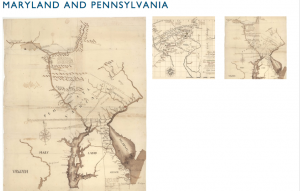Digitizing archival material comes with advantages and disadvantages; creating a large responsibility for the archivist.
Digitally cataloging historical information makes the material accessible. For example prior to the travel journals being published online, the only way one could read them would be by reading the actual journal. Now the contents are available online, so the information can be viewed and used by anyone. This helps, also, to protect the original documents from potentially being damaged by users. Inputing archives into databases allows information to be perused that could have otherwise been lost.
Another major advantage to having information on a digital platform is that it can be analyzed in new ways. Researchers are able to make visual representations of content to gain a deeper understanding of the material. Having a large amount of accessible data allows not only researchers and historian but everyone to gain a more complete understanding of a period in history.
Creating digital archives is becoming easier and nearly anyone is able to contribute. While this comes with many important advantages, there are undeniable downsides. One of which is the inevitable bias that comes with republishing work. By taking anything out of its original context alters the meaning of the work and skews how it is perceived by readers. Even just the way information is grouped, categorized, and framed impacts the way in which readers will come to understand it. Therefore archivists must be aware of the way they frame their work and display it to the world.
When making my own Stories of the Susquehanna Valley Omeka exhibit I found that, though technology has advanced and continues to improve everyday, the system was not as efficient as it could have been. When trying to select images to include on each page there was not an easy way to search for the pictures I was looking for. In addition, many of the images were not in a descriptive way, lacking metadata, which did not accurately represent the content. However, overall I feel quite accomplished creating an exhibit of historical information as an undergraduate student. I was able to organize the pages of the exhibit ways that made sense to me. The Omeka website keeps track of those who post images and articles which provides credit for the work where credit is due. The exhibits can be edited and added to at any point which allows it to evolve and grow. [http://ssv.omeka.bucknell.edu/omeka/exhibits/show/mostly-maryland]


Leave a Reply